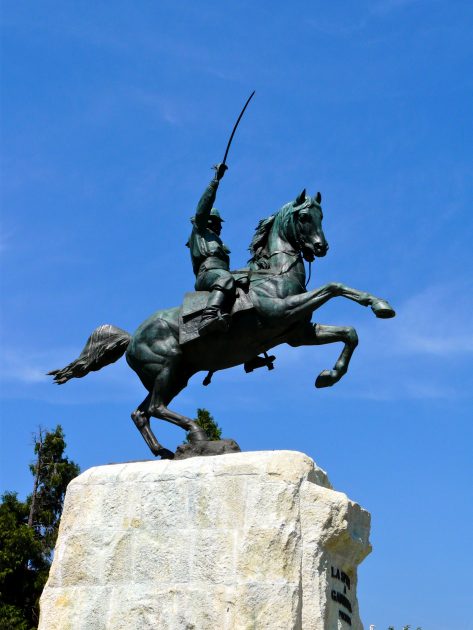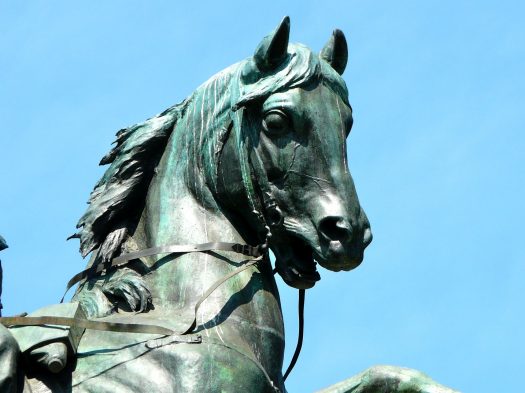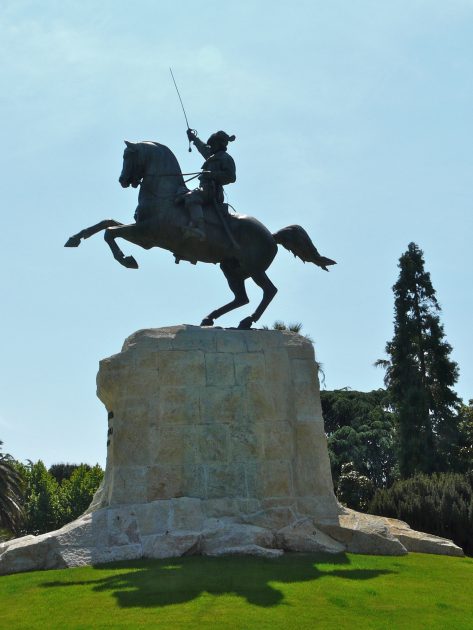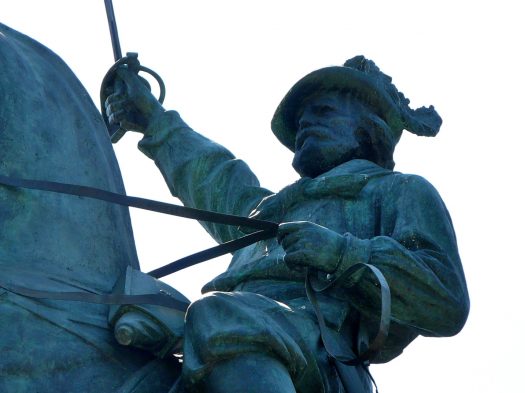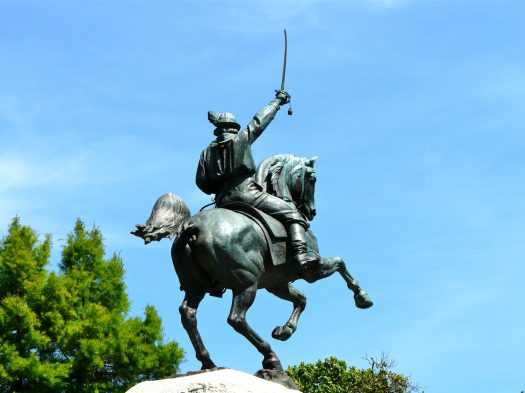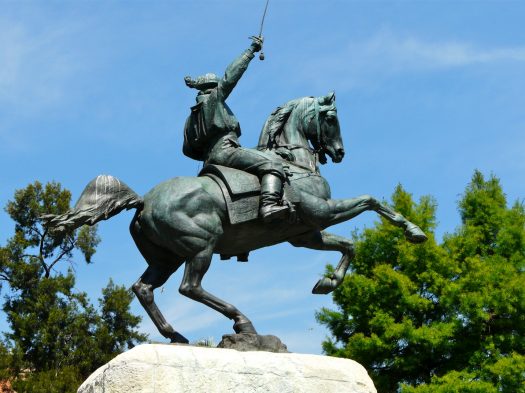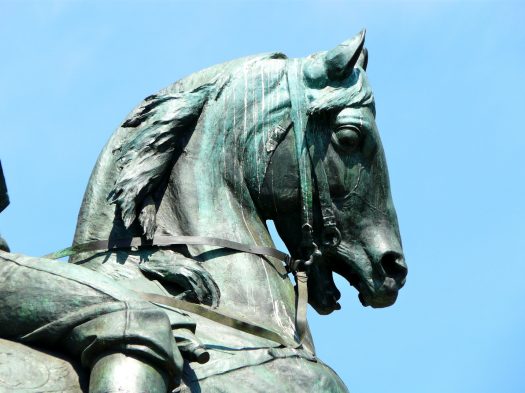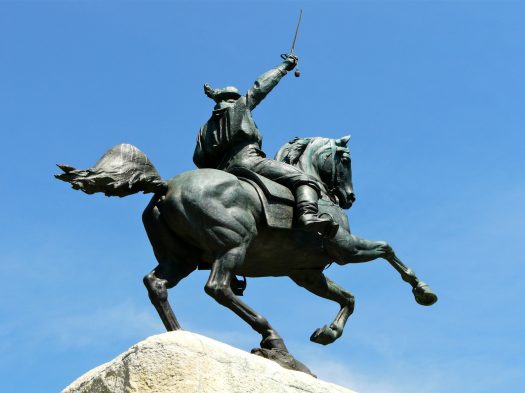- CountryItaly
- Town:La Spezia
-
Year of creation:1913
- Rider(s):Garibaldi, Giuseppe
(1807–1882) joined the patriot revolutionaries in his twenties. After a failed insurrection, he fled to South America, where he took part in some civil wars and where he met and married his wife, Anita. Garibaldi returned to Italy in 1848. After the crushing Piedmontese defeat at Novara in the unsuccessful First Italian War of Independence, Garibaldi moved to Rome to support the Republic, proclaimed shortly before in the Papal States. A numerically far superior French army defeated his army in 1849. Garibaldi withdrew from Rome with 4,000 troops. After an epic march, during which his wife Anita died, Garibaldi took refuge in San Marino, with only 250 men still following him.
In 1859, the Second Italian War of Independence broke out. Garibaldi conquered Sicily, crossed the Strait of Messina and marched north. His progress was met more with celebration than with resistance, and in September 1860 he entered Naples by train. However, despite taking Naples, Garibaldi’s volunteer army was not able to conclusively defeat the reorganized Neapolitan army. The Piedmontese, technically his allies, were unwilling to risk war with France, whose army protected the Pope. This jeopardized Garibaldi’s plans to march onwards to Rome. Garibaldi chose in 1861 to hand over all his territorial gains in the south to the Piedmontese. Some consider the handover of his gains as a political defeat, but Garibaldi saw that the only possibility for Italian unity lay in bringing it under the Piedmontese crown. The meeting at Teano between Giuseppe Garibaldi and Vittorio Emanuele is one of the most important events in modern Italian history.
Garibaldi has been dubbed the ‘Hero of the Two Worlds’ in tribute to his military expeditions in both South America and Europe.
- Sculptor(s):Garella, Antonio
(1863 – 1919) was an Italian sculptor
-
“Recently restored, the monument is made of bronze and weighs 60 tons. It is one of the few equestrian statues in the world with a prancing horse, standing only on its hind legs. The placement of the statue, at the time of its construction, was a reason for some controversy. So much so that the statue, completed in 1911, was inaugurated only two years later. The choice finally fell on the public gardens where some orange trees where cut to give space to the statue. A party like that you can’t forget. And I actually remember well, even if many years have passed since 1913, now. The inauguration of the monument to Garibaldi was scheduled for Sunday, June 1, but already on Saturday, the city was crowded with Garibaldi partisans. It seemed that the world suddenly had decided to visit La Spezia.
“A train arriving from Parma!”, “Here’s one from Pisa!” And then Bologna, Genoa, Turin: at the station trains kept coming. So go on, blowing in the brass instruments and – they were not one, but two days of celebration – cycling and rowing races.
A statue like that, well none of us had ever seen it, what do you think? It seemed like they never wanted us to see it: we knew that it had been ready for two years, but for one reason or another, we had not seen it yet. And what a surprise: a horse rearing up into the sky and, riding it– with the sword pointed towards the sun – the Hero of the Two Worlds. We all knew the sketch by Antonio Garella, the sculptor, and all we had discussed the choice of the place where the statue would be set. My father, for example, did not agree with the cutting of the orange trees. “Garibaldi must be a great man, but what did the orange trees do wrong?!” He said. And yet, when the cloth fell, he was astonished indeed.”

